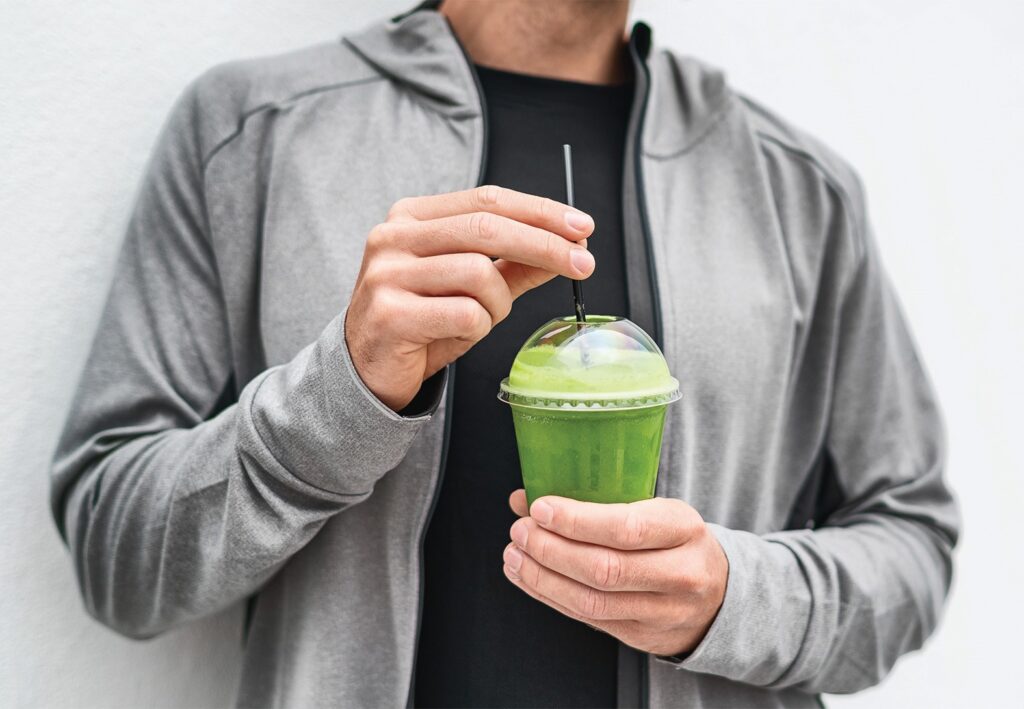Developing sustainable, eco-friendly methods to process raw materials abundantly available in Egypt, but little used locally, might be an economic boon. The processed raw material could be exported to new markets, something the Egyptian government has been working on since the war in Ukraine amid ongoing supply chain bottlenecks. In the long term, local industries might find new uses for those raw materials.
A case in point is the sustainable production of spirulina, freshwater microalgae high in antioxidants used as a nutritional supplement. Local companies hardly use it, and those that do import it. Imtenan Group, a food and health supplements company based in Cairo, is one of a few selling packaged powdered spirulina.
Globally, spirulina is a niche market with growth potential, one that is the target of a team of undergraduates at Zewail City for Science and Technology (ZCST) researching ways to process algae using solar energy. “We decided on that project because it has a growing international market and offers a direct application of our studies and skills into a very young industry in Egypt with a promising worldwide market,” says team leader Mohamed Fouad.
Spirulina’s world
Spirulina is an alga that uses photosynthesis to absorb carbon dioxide and release oxygen. This blue and green microalgae is considered a superfood that strengthens the immune system. It contains some of the widest varieties and highest concentrations of vitamins B6 (also present in chickpeas and tuna), K (avocados), and E (almonds and peanuts). “Spirulina supplements can help lower levels of total cholesterol, low-density lipoprotein (LDL) cholesterol, and triglycerides significantly,” according to Angela Haupt, a writer and editor at Forbes Health, in June.
Spirulina is mainly used to supplement diets to make them healthier without additional calories. According to Food Matters, a specialized portal, spirulina as a dietary supplement contains 65% to 71% complete protein. Meat, for example, is only 22% protein. Additionally, spirulina has 147% more protein than chicken per 100 grams.
NASA has been researching spirulina for dietary purposes since the 1980s and commonly uses it as a food supplement for astronauts. In 2016, NASA said 1 kilogram of spirulina is nutritionally equal to 1,000 kilograms of vegetables.
It also is more sustainable to produce compared to animal-based protein. According to Energybits, an energy drinks company that uses spirulina in its shakes, the algae uses 2% of the water required for the same amount of beef protein.
It also has a very high potential for development, especially as a small-scale crop for nutritional enhancement, added income, and environmental credentials said a June 2021 research published by the European Algae Biomass Association (EABA) and the market intelligence agency Meticulous Research. Spirulina is an ideal ingredient for manufacturing medical products, skin moisturizers, and its antioxidants can help combat cancer.
Spirulina can also be used as cattle fodder. A research paper by the Journal of Animal Physiology and Animal Nutrition and Animal Feed,” published in 2012, associated it with “improvements in animal growth, fertility, aesthetics and nutritional product quality.”
A significant advantage of spirulina is it can be easily stored as powder or dried flakes. The only requirement is to be kept in a dry, cool place. Most spirulina processors store it in powder form. “The spirulina powder segment is estimated to account for the largest share of the overall spirulina market in 2021,” said Meticulous and EABA research.

Coming to Egypt
Given spirulina’s limited uses in Egypt, Fouad, the team leader developing the sustainable spirulina processing method, hopes to meet international standards for export. “Spirulina production in Egypt is not of high food grade, so spirulina sellers like Imtenan import it,” he said.
Producing spirulina requires the collection of the algae cells from nature and transported to a lab, placed in a nutritious medium. That allows the cells to divide once every day. The process takes four to 10 days for the collected spirulina to be harvested. However, the right amount of spirulina must be gathered not to spoil the entire batch. “We take a part of the cells from the system. Too many would hinder perfect conditions for growth”, explains Lisa-Marie Dormayer, who works at the Austrian company Ecoduna, told Food Unfolded, a specialized portal. Nutrients and water are added to replace the removed cells, nutrients and water are added.
According to Fouad, the equipment his team is developing will meet international standards for cultivating and producing spirulina. That would significantly reduce dependence on imports, and with additional support, investments, and up-scaling production, exporting spirulina might be possible.
Their project’s primary focus is developing a method that uses “renewable energy to produce spirulina, promoting sustainability, and establishing a new business model,” said Fouad.
Eco-friendly production is the core of Fouad’s project. “This solar-assisted equipment produces more output in less time than traditional manual methods,” says Fouad. This method saves about 2,500 kilowatt hours per month in drying, nearly 40% of the electricity typically used.
However, such benefits would diminish with increasing production. “Conventional large-scale spirulina production [facilities] use spray drying because it is faster,” said Fouad. “However, it is much more energy intensive than the technique we are adopting.”
One of the main issues is the team’s dependence on conventional components. “We use photovoltaic panels that convert light energy into electricity,” Fouad says. “That differs from the solar thermal air panels we designed to supply dryer thermal energy.”
However, Fouad must consider the project’s financial feasibility. Using locally manufactured panels that efficiently use solar energy allows the team to cut costs and increase profit while maintaining a healthy environment for spirulina.
Other challenges relate to the nature of spirulina. It is fragile, as it can lose protein content in each step of the production process.
Additionally, scheduling during production is essential. Spirulina has a short shelf life and must be dried almost immediately after cultivating. Then it can be processed “into the commercially available forms of powder, pellet, flake and capsule in order to prolong its shelf life from several hours to about one year,” noted a December research paper published by the South China University of Technology.
According to Fouad, production challenges include proper insulation, solar variations, and temperature control. “The main challenge in equipment design is to be able to achieve ideal design conditions,” he said.
Lab to product
Fouad and his team are seeking outside funding to complete the project. “Regarding the drying and separation phases, we are still at the prototyping stage,” he says. “We need financial support to kick-start [production] and test the different designs we did to reach the best possible design for optimizing output.”
That support might come from government initiatives. “The government is keen on developing the innovative capabilities of youth within a framework of localizing the SDGs,” Minister of Planning and Economic Development Hala El-Said told representatives of government universities and students in April. “The government is keen to benefit from suggestions in the fields of social empowerment of women, environmentally friendly projects and supporting the health system.”
Focusing that support on scientific innovations could impact society far beyond financial gains. “Science underpins improvements in human welfare through technologies it develops for health, food production, engineering, and communication,” said a 2010 World Bank report.
Profitable business?
Making money from spirulina production in Egypt in the short term means it must be sold abroad. According to Allied Market Research, “the global spirulina market was valued at $393.6 million in 2019.” Like many other products, however, spirulina sales slowed in 2020 and 2021 amid global lockdowns and disruptions in logistics and transportation.
“The effects of the COVID-19 pandemic on this market were felt in China starting in 2020, as the country is one of the world’s largest producers and consumers of spirulina,” said the June 2021 research by Meticulous and EABA. “In China, factory closures, spirulina processing facilities operating at reduced capacities, and restrictions on importing and exporting spirulina biomass strongly impacted the spirulina market.”
Experts see the market recovering quickly as global market demand has shifted to more healthy products to strengthen the immune system amid new COVID-19 sub-variants. “COVID-19 has fostered the growth of the spirulina market attributed to the need for nutritional attention and vitamins as a potential remedy against the COVID-19 virus,” said an April 2021 report by Allied Market Research.
The Spirulina Market Research Report 2022 estimated the global spirulina market at $337 million in 2021 and $362 million in 2022. It is projected to reach $525 million by 2027. Meticulous and EABA forecast that in terms of volume, the spirulina market should grow by 14% annually from 2021 to 2028 to reach 73,150 tons by 2028.
Meanwhile, PR Newswire said, “Demand for microalgae in the food and beverage sector will total $132.5 million by 2031.”
Those projections could be conservative. With increasingly volatile weather resulting in flash floods, droughts, and heat waves that can destroy crops, finding innovative, sustainable ways to produce nutritious food is vital. “The world will need to rethink its approach to food as the planet warms and the population grows toward an expected 9.7 billion people in 2050,” noted The Economist in 2018.







